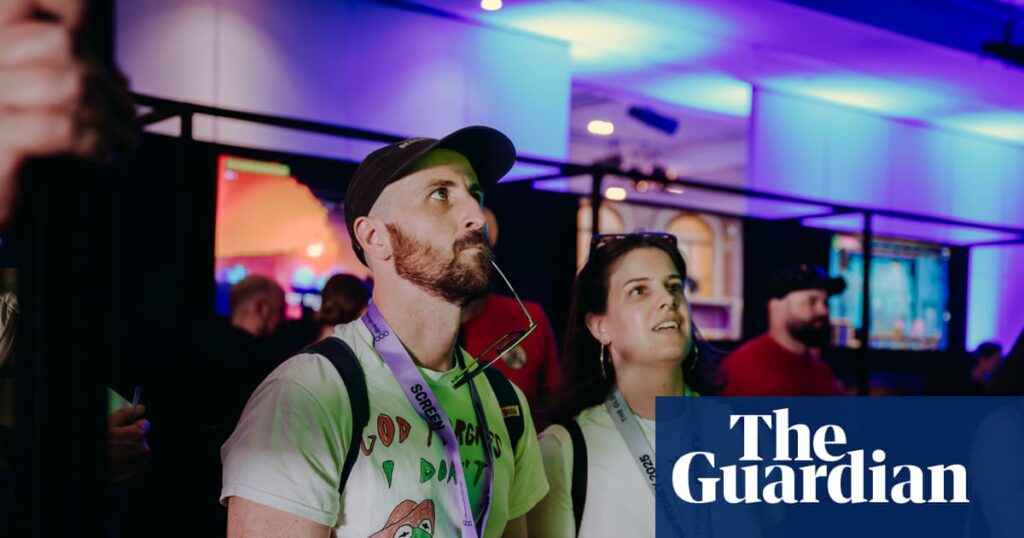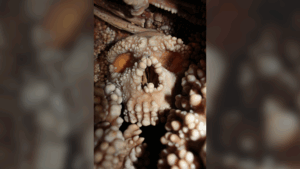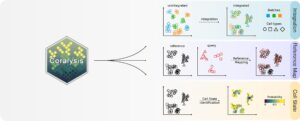
There’s no escaping the fact that SXSW Sydney—Australia’s iteration of Austin’s renowned tech, music, and film event, now in its third year—is absolutely beset by brands. On Saturday, families arrived at Tumbalong Park for a free concert for kids, meandering around the garish yellow CommBank Tour zone, while a line wound its way into the giant L’Oréal tent. However, just meters away at the International Convention Centre, the halls dedicated to gaming offered a more subdued corporate influence.
Amid a global gaming industry downturn with no end in sight, big studios remain cautious about investing in Australia, deterred by its high cost of living. This scenario has allowed indie developers to take center stage at the conference, which otherwise exudes a synergistic brand-o-rama. Larger teams were a rarity; most projects on display were the labor of love from solo developers or small teams. Reflecting the broader Australian gaming scene, many of these indie games were punching well above their weight.
Indie Games Steal the Spotlight
The two Australian games with the most significant backing at the showcase still felt relatively scrappy. SXSW’s game of the year, Mixtape, from veteran developers Beethoven and Dinosaur—known for their psychedelic journey The Artful Escape in 2021—and mid-tier US publisher Annapurna Interactive, is a gleeful 90s coming-of-age tale. It feels like an Edgar Wright-esque comedy mixed with the animation style of Spider-Man: Into the Spider-Verse.
Set for release later this year, Mixtape is a nostalgic ride through the best parts of a well-spent youth: skating downhill on a lazy afternoon as Devo blasts from a cassette tape, headbanging to Silverchair on a road trip, sneaking booze into a party, and escaping the cops in a barely controllable shopping trolley. My 20-minute demo left me grinning ear to ear, with at least one incredible joke involving controllable tongues that made me burst with laughter.
Meanwhile, Pro Jank Footy is the brainchild of Danger 5 co-creator David Ashby and collaborator Tyler Roach, backed by film distributor Umbrella, marking their tentative foray into gaming. It’s a ridiculous, arcade-style take on AFL that harkens back to SNES-era sports games. After each goal, the losing team picks one of three absurd power-ups—seagull attacks, giant players, resetting the score to nil-all—before play resumes. A live demonstration in Tumbalong Park, commentated by Broden Kelly of Aunty Donna, drew a small crowd of mostly families. The brave few who risked humiliation on stage in return for a neat scarf seemed to be having a good time.
Hidden Gems and Emerging Talents
But the showcase’s highlights extended beyond these headliners, with games backed by less-established supporters making a strong impression. One standout was the hyperkinetic shooter Hyper Primate, which casts players as an ape armed with cobbled-together wooden guns, blasting other animals in search of giant floating bananas. Despite its unashamedly amateur look, the game’s movement mechanics felt sublime as I slid, dashed, and jumped around a jungle arena at dizzying speeds.
Another gameplay triumph was the solo effort Huedini, a frantic top-down game where players rapidly match colors to avoid or absorb enemies and obstacles. Even after a brief session, the game’s seemingly simple mechanics hinted at the potential for brain-melting complexity.
The Victorian government’s robust support for indie developers continues to pay off, with multiple projects, including Huedini, funded by VicScreen. Other notable projects from this cohort included Way to the Woods, a gorgeous adventure game following a deer and fawn with light-related powers in an overgrown cityscape, and the charming postie puzzle game Letters to Arralla, which tasks players with deciphering picture-based addresses in a gentle island community where everyone is a root vegetable. South Australia also had a strong showing, from Pro Jank Footy to the minimalistic cube-rolling puzzle game Toya, which provided a calming oasis amidst the busy show floor.
International Influence and Accessibility
Even the international guests mostly embodied the showcase’s grassroots spirit, with the exception of Sony’s Ghost of Yōtei, which wasn’t playable but featured a well-attended talk. Strong projects from small teams included A Week in the Life of Asocial Giraffe, a point-and-click social anxiety puzzler from the US; Abyss X Zero, a 3D Zelda-style action game from Brazil; and Crescent County, a pastel-colored broom racing simulator from a UK-based developer.
A common complaint about previous iterations of SXSW Sydney was the price tag, with even the cheapest week-long access pass for games costing over $100. This year, entry to the games exhibition was free on the final day, drawing families and kids in droves. Party games like Cow Chess—a project from a Sydney-based duo that involved neither cows nor chess and felt like a cross between Worms and Super Smash Bros by way of Terry Gilliam—and Chained Beasts—a co-op Roman gladiator game where every player is bound together by chains—benefited hugely from the madcap energy of children eagerly trying every game they could.
The event’s success in highlighting indie developers underscores the vibrant creativity and resilience of Australia’s gaming scene. As the industry navigates economic challenges, the spotlight on indie games at SXSW Sydney 2025 offers a hopeful glimpse into a future where small developers continue to thrive and innovate, captivating audiences with their unique and imaginative creations.






